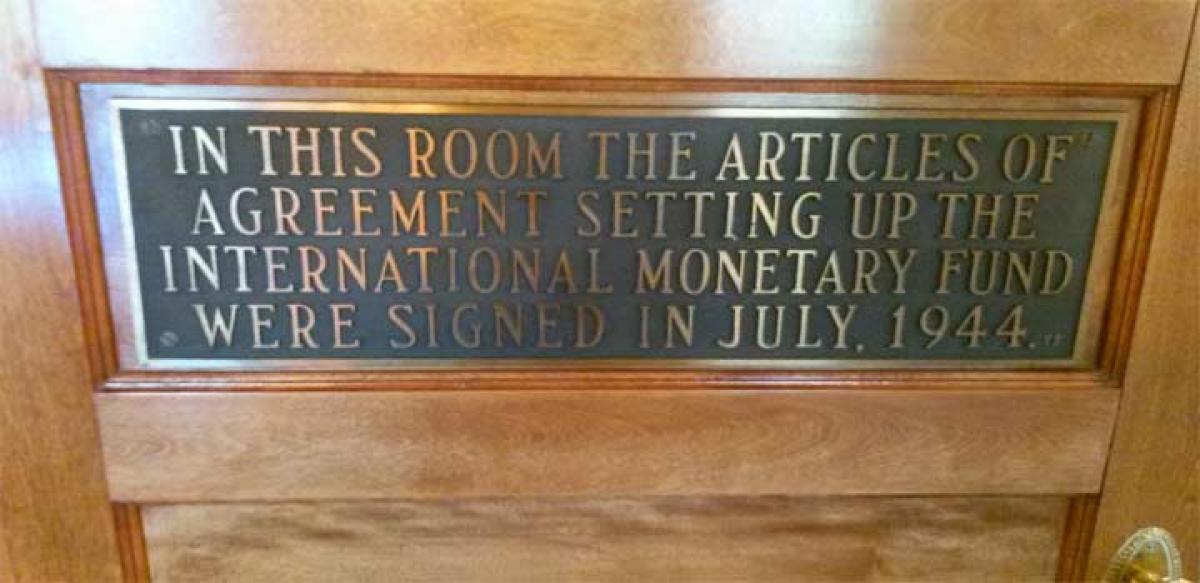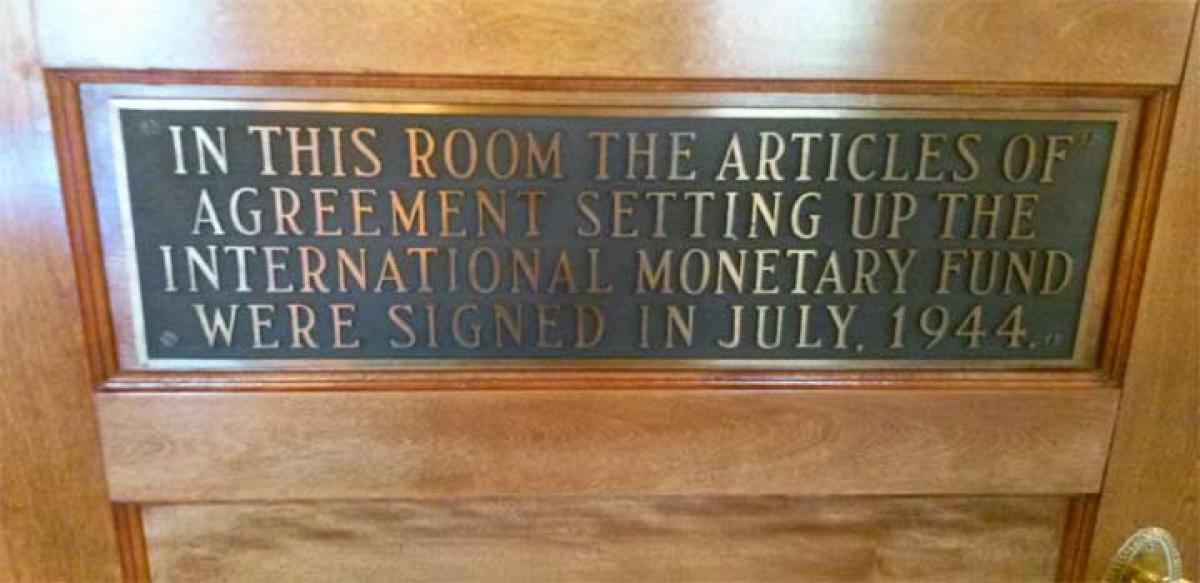Live
- DEO suspends teacher accused of sexual assault
- PM ‘cursing’ Congress out of despair: Maharashtra Cong Chief
- Applications are invited for Junior Colleges Scheme District Scheduled Castes Development Officer Ramlal
- A nomination was filed on the second day for the Nagar Kurnool parliamentary seat
- SP Gaikwad inspected the Telangana Amarnath Saleswaram Jatara yatra arrangements
- Rahul Gandhi's decision to contest from Wayanad shows 'lack of confidence': BJP President Nadda
- IPL 2024: Delhi bowlers will go after all of SRH’s top-order batters, says head coach Ricky Ponting
- At Amroha rally, PM Modi sends out ‘meaningful’ message for Muslims and Hindus
- Tripura records highest 79.83 pc voter turnout in Northeast
- The government has to clear the confusion
Just In

IMF, central banks in spotlight. Flanked by interest rate decisions in Great Britain, Japan and Australia, the IMF\'s annual meeting in Lima takes centre stage in the calendar next week, with policymakers focussing on China\'s economic slide and its impact on the rest of the world.
Flanked by interest rate decisions in Great Britain, Japan and Australia, the IMF's annual meeting in Lima takes centre stage in the calendar next week, with policymakers focussing on China's economic slide and its impact on the rest of the world.

Activity in China's vast factory sector shrank again in September fuelling fears that the economy there may be cooling more rapidly than thought just a few months ago, with a reverberating impact on emerging and developed economies.
Equity markets worldwide have been falling with Wall Street just recording its worst quarter since 2011, so IMF delegates, primarily central bank governors and finance ministers from around the globe, will seek reassurances from China that it can smooth, if not halt, its slide.
"Driven by fears of a sharp slowdown, they will likely delay the structural adjustments in the coming two years and use the 'old normal' approach to support the economy, that is, rely on credit expansion and public investment," Nordea economist Amy Yuan Zhuang said. "Despite the financial market turmoil, we still see a soft landing as the most plausible scenario in the coming two years," she added.
The world's biggest economy, the United States is one of the least exposed to China and minutes of the Fed's September rate meeting, due on Thursday, will give a strong signal of whether a hike, the first in nearly a decade, could still come this year.
"The U.S. stands out for its relatively low exposure to the foreign sector," Credit Suisse said. "Not only is direct domestic consumption and investment low, but even within investment, the amount done to support export capacity is likely much lower than the other economies, given the U.S.’s low export share."
The Bank of England, not keen to be the first to hike, will stay put next Thursday and analysts still expect just one rate setter to vote for a rise, leaving the bank on course to make its first move well after the Fed. "When you get a number like that (payrolls) which shocks people's expectations about the Fed, it really does have a direct spillover to the outlook for the UK," Wraith said.
Japan appears to be on the brink of a recession and the Bank of Japan's tankan survey indicates worsening conditions. Still, the data are not expected to be enough to trigger more stimulus when the bank meets on Tuesday and Wednesday.
Instead, the BOJ may wait at least until its late October meeting, when economic forecasts are updated but more likely until early next year, when the impact of the Chinese slowdown is better gauged.
The Reserve Bank of Australia will also keep rates on hold on Tuesday and possibly for all of next year, satisfied that the currency's <AUD=> slide to its weakest level since mid-2009 has eased conditions enough to soften the impact of the bust following its once-in-a-century mining boom.
"The only scenario we could see the RBA thinking about another policy easing would be a sharp deterioration in the global growth outlook and an accompanying deterioration in the local economy and jobs market," Commonwealth Bank said in a note to clients.
"At this stage, the probability of this scenario developing appears small and probably would require an economic meltdown in China and other Asian economies," CBA added.
By BALAZS KORANYI

© 2024 Hyderabad Media House Limited/The Hans India. All rights reserved. Powered by hocalwire.com







